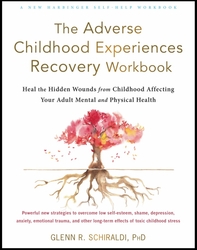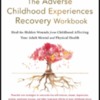Glenn R. Schiraldi, Ph.D. Psychology Today blog post, May 9, 2022
“The past is never gone. It is not even past,” wrote William Faulkner. Adverse childhood experiences (ACEs) often leave hidden wounds that negatively affect adults if unhealed. Emotional intelligence greatly facilitates the healing process.

What Is Emotional Intelligence?
Emotional intelligence (EQ) includes three key components:
- Comfort with the full range of emotions. All emotions are part of life. Individuals with EQ accept and are on friendly terms with whatever emotions come up—thinking, as mindfulness teaches, “Whatever I feel is okay—let me feel it.”
- Open hearted awareness. We can’t heal what we don’t acknowledge. Avoidance takes a great amount of energy and leaves disturbing emotions and memories unchanged.
- Ways to soothe and settle unpleasant emotions. Individuals with EQ do experience disturbing emotions. However, they tend to get down less often, are less upset by unpleasant emotions, and have ways to lift their mood without getting locked in endless, exhausting battles against disturbing emotions and memories.
The Healing Principle
Reconsolidation means the brain can change painful memories and their related emotions if we bring all aspects of the memory into full awareness. This principle is utilized by nearly all of the effective treatments for post-traumatic stress disorder. For example, if one tells one’s story to a respectful, compassionate witness, now respect and compassion begin to replace the shame that is stuck in the painful memory. If one learns to calm stress arousal as one recounts a difficult experience, then calmness begins to replace dysregulated stress arousal.
The Floatback Strategy for Disturbing Events
Most of us have experienced recent situations that elicited intense, excessive emotions and we (or others near us) wonder, “Where in the world did that come from?” Usually, it comes from disturbing memories from the past that are not settled. For example, an innocent remark is taken as criticism and we blow up in anger. The remark perhaps triggers a childhood memory of being shamed by a critical parent.
The floatback strategy, developed by William Zangwill and Cindy Browning and popularized by EMDR originator Dr. Francine Shapiro, is one way to soothe and settle the disturbing memories and emotions from both the recent event and the distant childhood event that drives the intense reactions in the present.
Utilizing the principle of reconsolidation, a person recalls the various aspects of a recent upsetting event. Without judgment and with kind curiosity, the individual notices
- What was sensed externally—what was seen and heard (such as angry or critical vocal tones, the scowling or disgusted facial expressions of the offending person, the individual’s posture and outward appearance), tactile sensations, and so forth
- Visceral sensations—locating what was experienced in the body and where, such as a racing heart, gut queasiness, or tightness in the throat or chest
- Emotions—such as anger, fear, or shame
- Thoughts—such as “This is awful; I can’t handle this”
The individual then settles and soothes the recent memory and associated reactions. Self-compassion (Neff 2011) is one effective way, where one repeats silently or aloud:
- “This is a moment of suffering” [comforting awareness]
- “Suffering is a part of life” [accepting even unpleasant emotions; acknowledging that everyone suffers—you are not alone]
- “May I bring compassion to this moment; may I give myself the compassion I need” [soothing and settling the memory and emotions; weaving loving kindness into what was before only disturbance]
Taking their time, individuals bring compassion especially to the parts of the body that hold the disturbance, such as the gut, the chest, the throat, or head. Then they track what’s going on — perhaps noticing subtle shifts in breathing, heart rate, tension, emotions, images, or thoughts.
Then individuals float back to the earliest time they can recall that elicited similar reactions and soothe and settle that memory in a similar way.
A similar floatback strategy starts by identifying a disturbing thought that the individual would like to change, and then traces back to the earliest time when that thought was first experienced. Both the recent and distant experiences are soothed and settled, and the disturbing thought is replaced.
After doing the floatback strategy, individuals often report feeling more whole—more connected to themselves, their bodies, and their emotions—as compassion replaces the troubling emotions and sensations associated with the disturbing experiences. With practice they become more skilled at responding to suffering in a kinder way.
Caution and Hope
Detailed instructions for the floatback strategy can be helpful (Schiraldi, 2021). If at any point this strategy, or any other self-managed strategy, becomes overwhelming, the strategy is put aside. Overwhelming reactions to the past may signal the need to enlist the aid of a skilled trauma therapist, who can teach many other ways to process troubling memories from childhood. The good news is that if one way is not effective, there are many other effective strategies to try so that one becomes confident in coping with difficult emotions. One need not suffer for decades without relief!
References
Schiraldi, G. R. (2021). The Adverse Childhood Experiences Recovery Workbook. Oakland, CA: New Harbinger.
Neff, K. (2011). Self-compassion: The Proven Power of Being Kind to Yourself. New York: William Morrow.
About the Author
Glenn R. Schiraldi, PhD, has served on the stress management faculties at The Pentagon, the International Critical Incident Stress Foundation, and the University of Maryland, where he received the Outstanding Teacher Award in addition to other teaching/service awards. His fourteen books on stress-related topics have been translated into seventeen languages, and include The Adverse Childhood Experiences Recovery Workbook, The Self-Esteem Workbook. The Resilience Workbook, and The Post-Traumatic Stress Disorder Sourcebook. The founder of Resilience Training International (www.ResilienceFirst.com), he has trained laypersons, emergency responders, and clinicians around the world on the diverse aspects of stress, trauma, and resilience.
Photo credits: fizzles.istockphto; Motortion.istockphoto



Comments (0)